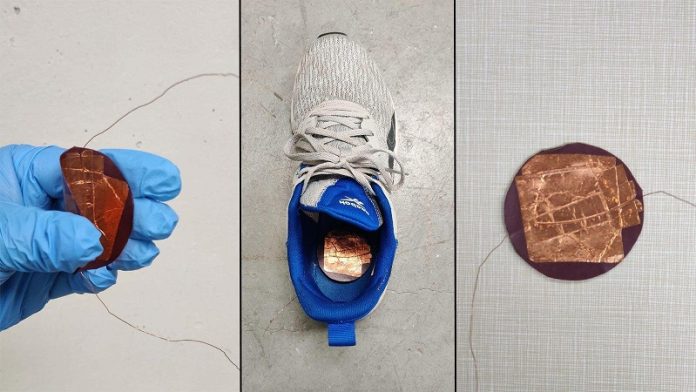
Imagine a future where tires charge vehicles as they drive, streetlights are powered by traffic vibrations, or skyscrapers generate electricity as they sway.
Thanks to researchers at Rensselaer Polytechnic Institute (RPI), this vision could become a reality.
They have developed a new environmentally friendly material that produces electricity when compressed or exposed to vibrations, a phenomenon known as the piezoelectric effect.
In a recent study published in Nature Communications, the RPI team created a thin polymer film infused with a special compound called chalcogenide perovskite. This compound generates electricity when squeezed or stressed.
While other piezoelectric materials exist, most contain lead, which is toxic and harmful to the environment. What makes this new material exciting is that it is lead-free, making it a safer option for many applications.
Dr. Nikhil Koratkar, who led the study, explained the importance of creating a material that is not only environmentally safe but also inexpensive to produce using common elements found in nature. “Lead is toxic and is being phased out of materials and devices. Our goal was to create a material that is lead-free and can support the transition to green energy,” he said.
The new material, only 0.3 millimeters thick, could be integrated into a wide range of devices, machines, and structures. Koratkar mentioned that the material converts mechanical energy, like pressure or vibrations, into electricity. The more pressure applied over a larger area, the more electricity is generated.
For example, it could be placed under highways to generate electricity as cars drive over it, or used in building materials to capture energy from vibrations.
The piezoelectric effect works when a material’s internal structure lacks symmetry. When stressed, the material deforms, causing positive and negative ions to separate, creating an electric current. The RPI team’s new chalcogenide perovskite material easily breaks its structural symmetry under stress, leading to a strong piezoelectric response.
The researchers tested their material by applying different types of pressure, like walking, running, clapping, and tapping fingers. In each test, the material generated enough electricity to power LED lights spelling out “RPI.”
“This technology could be used in devices like wearable electronics for runners or bikers that light up shoes or helmets to make them more visible,” Koratkar said. While this is a proof of concept, the goal is to implement the material at a larger scale to significantly impact energy production.
Looking ahead, Koratkar’s team plans to explore other chalcogenide perovskite compounds to find those with even stronger piezoelectric properties. They hope to use artificial intelligence and machine learning to speed up the discovery process.
“Sustainable energy production is critical for our future,” said Shekhar Garde, dean of the RPI School of Engineering. “Professor Koratkar’s work is a great example of how innovative approaches to materials can help address global energy challenges.”



